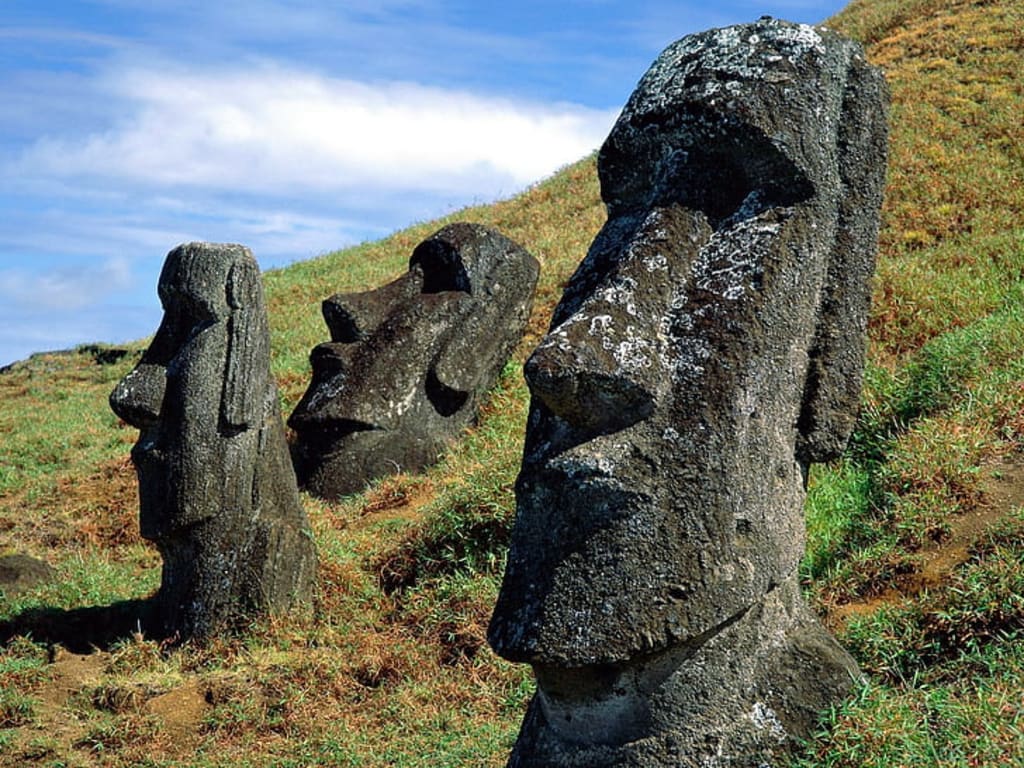
Research Indicates That Moai Statues on Easter Island Were Moved in an Upright Position to Their Sites

The moai figures on Rapa Nui, also known as Easter Island, have remained wrapped in enigma for ages. Among the plethora of inquiries that have troubled archaeologists since the unveiling of these colossal monoliths, the foremost concerns pertain to their positioning and dimensions. Given that each one weighs multiple tons, what methods were utilized to transport and set them on their bases? A recent study published in the Journal of Archaeological Science appears to finally provide some clarity.
The moai are predominantly located around the island’s border. It is believed they were sculpted at the Rano Raraku quarry inland and subsequently moved to stone platforms near coastal regions. There, they were frequently arranged side by side, gazing towards the island’s interior like eternal guardians. Although the quarry is situated just under a mile from the coast, relocating a moai with limited means would have posed a significant challenge.
Researchers Carl Lipo from Binghamton University and Terry Hunt from the University of Arizona examined 962 moai. They particularly concentrated on 62 megaliths that seemed to have been left behind between the quarry and their final locations. Unlike those that reached their ahu, or platforms, these had indications of damage from mechanical actions, rather than appearing to have been purposefully placed.
Investigating Rapa Nui oral traditions that speak of moai “walking” from the quarry, they endeavored to visualize what that process would entail. Thought to have been moved using ropes, those transporting the statues would have employed synchronized lateral movements to shift each monolith.
The crucial factor for this method to succeed lies in the slope and center of mass of each moai, along with their D-shaped bases. The rounded section functioned as a pivot point, while the gentle incline of the megaliths—ranging from six to 15 degrees—altered the center of mass towards the front edge of the base. When tilted sideways, the statue would tip forward, restrained by movers with carefully positioned ropes, producing a rocking action that simulates the statues “walking.” After reaching their locations, the section that created the incline was carved away to enhance stability.
To validate their theory, the researchers utilized a replica moai weighing 4.79 US tons. Supported by a group of 18 volunteers—four on the left rope, four on the right, and 10 on a rear rope—they successfully transported the moai 328 feet in 40 minutes. Nevertheless, the Rapa Nui inhabitants might have been able to achieve this with fewer individuals over an extended duration.
Lipo and Hunt’s findings imply that the inhabitants of Rapa Nui possessed an advanced grasp of physics, especially in terms of resonance principles. Furthermore, this reinforces the notion that they accomplished remarkable feats with a relatively small populace, challenging the assumption that they brought about their own downfall through overpopulation and deforestation; a belief stemming from the extensive effort required to create and relocate the numerous statues.
“Examinations of the moai themselves indicate that a small populace could have constructed and moved them,” Dr. Dylan Davis conveyed to The Guardian. “It merely necessitated collaboration.”
Sources: Easter Island Moai Statues Were Once ‘Walked’ to Their Platforms, New Study Finds; The walking moai hypothesis: Archaeological evidence, experimental validation, and response to critics.
Related Articles:
– Stunning Photo Transforms Easter Island Head Into a “Gate Keeper to the Stars”
– The World-Famous Easter Island Heads Have Bodies Buried Underground
– 1,700-Year-Old Roman Statue Accidentally Unearthed in Near-Perfect Condition